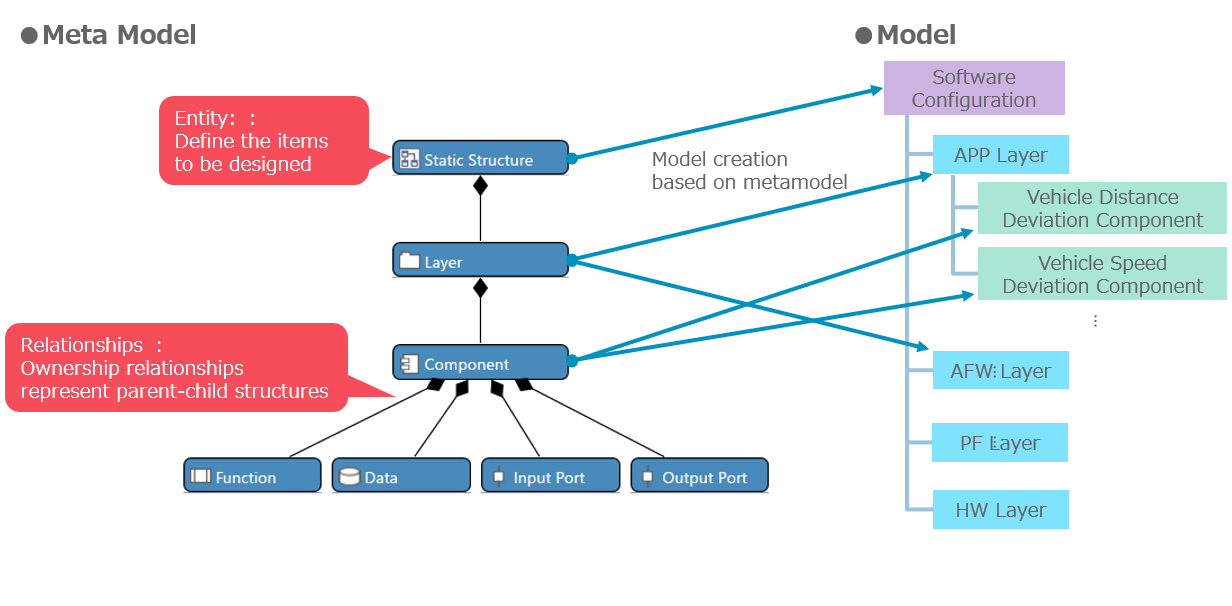Metamodel
What is a metamodel
A metamodel is the items to be designed and their structural definitions.
- Design document system and description items
- Elements and their attributes that appear as design inputs and outputs
- Structure hierarchies, whether logical or physical
- Relationships between design elements
Items that were traditionally defined as templates for design documents can now be defined in metamodels.
With general-purpose document creation tools, design content can be freely described, so inconsistencies and constraint violations may be overlooked during design. On the other hand, Next Design allows you to set constraints on the hierarchical structure and condition the objects that can be related, so you can naturally design according to the meta model.
The types of design elements defined in the metamodel are Entity , The parent-child relationship between design elements (hierarchical structure constraints) and reference relationships between design elements are called Relationships.

Relationships between models and metamodels
A model is a unit of all design information about a design object. A metamodel is the structure of that design information and the definition of design items.
- When applied to object orientation, metamodel entities correspond to classes, and models correspond to instances.
All models designed by Next Design are created according to the metamodel, so inevitably the model will be consistent with the structure and items stipulated in the metamodel.
Conversely, it is not possible to add undefined design items to a model or to change a model that does not conform to the structure, and only models that comply with the constraints stipulated in the metamodel can be created. This is the big difference between general-purpose document creation tools and Next Design.
